We asked a rabbi to explain what Hanukkah colors are and how they became part of the modern holiday tradition
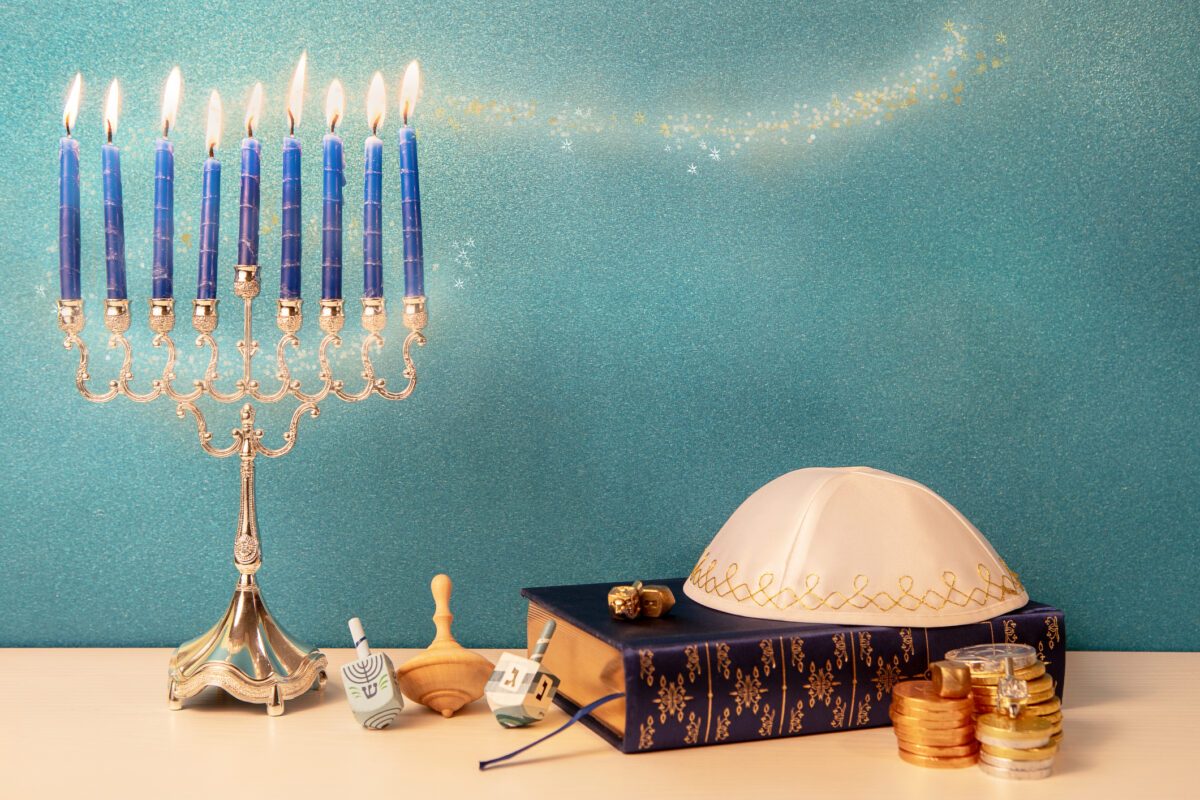
What Are Hanukkah Colors, and What Do They Mean?

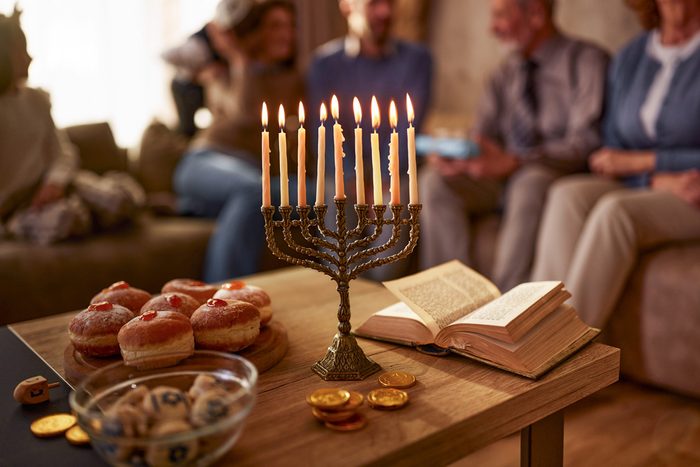
What’s the story behind the Hanukkah palette?
The history of Hanukkah goes back more than 2,000 years. The Maccabees won back the Second Temple and lit a menorah with just one day’s worth of oil, but the oil lasted for eight days. Many saw this as a miracle. That light came to stand for strength, hope and divine presence.
Over time, the celebration transformed into the holiday we know today. This might sound familiar: A family sits around the table, the smell of latkes (potato pancakes) filling the air. A blue-and-white tablecloth is spread out with care. A silver menorah shines in the candlelight, and gold-wrapped chocolate coins are placed for the children. The colors blue, white, silver and gold each tell a special story. They are closely linked to the cultural meaning of colors in Judaism, where different colors often stand for faith, history and tradition.
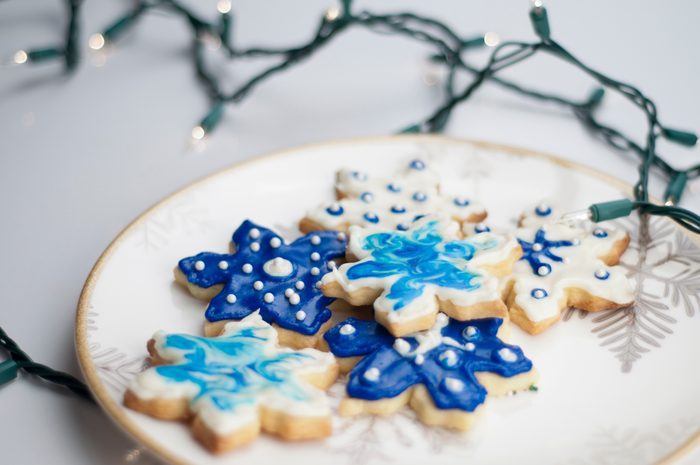
What are Hanukkah colors?
Walk into stores in December, and you’ll be hit in the face with Christmas colors, but you may spot Hanukkah colors as well. If you’re shopping for Hanukkah decorations, gifts or wrapping paper, you’ll notice that most items feature blue and white—sometimes with a touch of silver or gold. And while we’re used to seeing those colors, they’re not a requirement. Think of them more as an enhancement or decoration.
“While there are no colors associated with Hanukkah in Jewish tradition, common colors associated with the holiday are blue and white,” says Litvin.
So why are blue and white the de facto Hanukkah colors? The connection may have roots in poetry. In 1864, the Austrian Jewish poet Ludwig August Frankl called blue and white the colors of Judah in his poem “Juda’s Farben,” or “Judah’s Colors.”
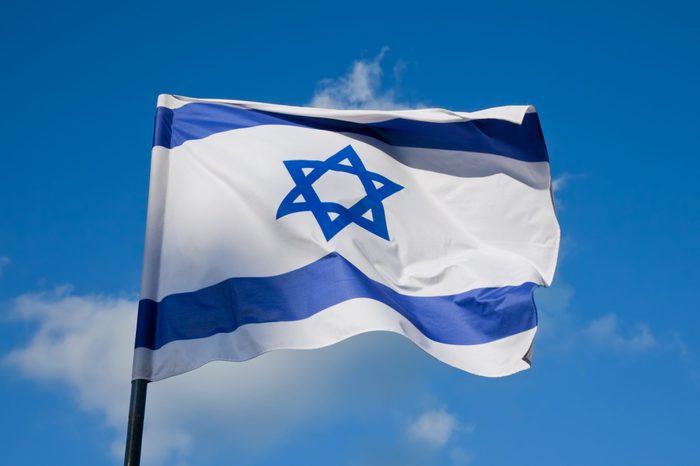
What do the colors of Hanukkah mean?
Plenty of people think of blue and white as Hanukkah colors (hence the number of Hanukkah crafts that feature them), but the combo is probably most recognizable from the tallit (or tallis), a prayer shawl worn (most often) by Jewish men every day and especially on special occasions, including Jewish holidays and life events like a bar mitzvah. You may also be familiar with the blue and white of the modern Israeli flag, which was designed in the late 1800s and implemented as the national flag of Israel in 1948. The flag includes a blue Star of David (Magen David), which represents Jewish identity and continuity. Separately or together, blue and white have always been meaningful colors for many of the Jewish faith.
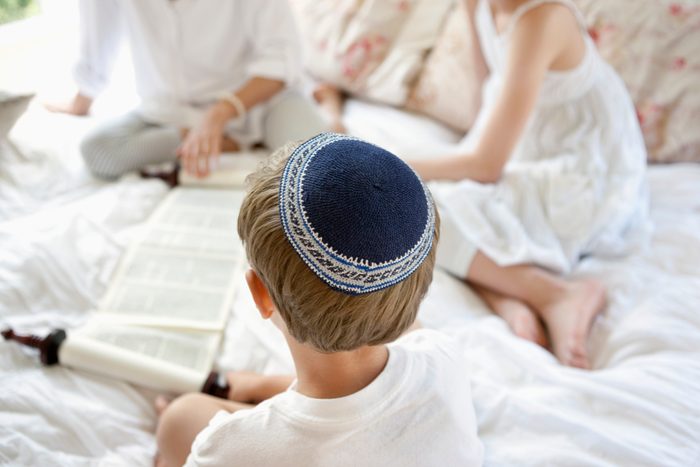
What does white symbolize?
“The color white in Judaism symbolizes purity,” says Litvin. That’s why you’ll see Jewish brides in the symbolic color, though they’re far from the only ones who don it. Observant Jewish men often wear a white garment called a kittel (it looks a bit like a cotton robe) on extremely spiritual holidays, including the Jewish New Year of Rosh Hashanah, and Yom Kippur, the Day of Atonement. A white kittel might also make an appearance at the Passover meal known as the Seder; those leading the service might wear one.
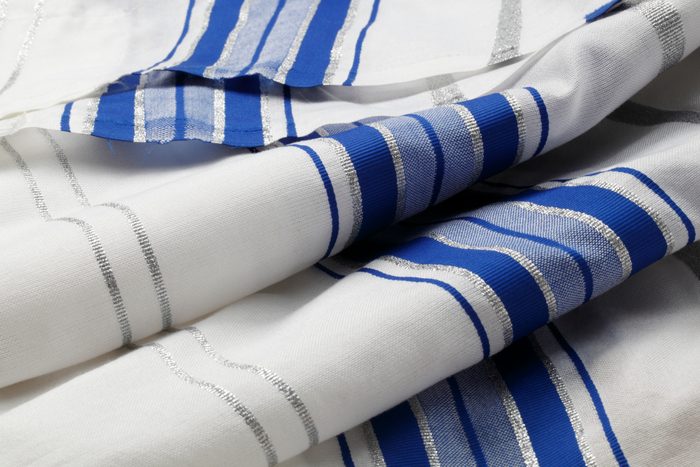
What does blue symbolize?
Though modern Jewish prayer shawls come in a wide variety of colors, with stripes ranging from classic blue or black to rainbow shades, the most traditional is white with bold blue stripes. And they have a fascinating history. Said to have been a blue or turquoise shade, a dye known as tekhelet was used in ritual garments or decorations. “The blue of the tallis, originally sourced from a small animal, can symbolize elevating nature in the service of G-d,” says Litvin.
Blue is also a color associated with the heavens and faith. Blue once represented God’s presence and the ritual robes and garments of the high priest in the temple, according to the Jewish Virtual Library and Israel Ministry of Foreign Affairs.

What do silver and gold symbolize?
Other common Hanukkah colors are silver and gold, both of which symbolize the menorah, a nine-branched candelabra that’s a centerpiece of Hanukkah. Traditional menorahs “were commonly made of precious metal and, for much of history, often one of the very few things of value Jewish families owned,” Litvin says.
Another reason you’ll see silver and gold during the holiday is because of the “coins that were gifted to children, often on the fifth night, to increase their joy in the holiday,” he says. These days, you’ll often come across gold-wrapped chocolate coins, referred to as Hanukkah gelt, Yiddish for “Hanukkah money,” that serve as Hanukkah gifts for kids.

What are the Hanukkah candle colors?
In the story of Hanukkah, the candelabra was lit with olive oil, hence the miracle of the oil that lasted for eight days. But in modern times, Hanukkah candles are most often lit eight consecutive nights in a row, starting with a single candle and building up to eight candles on the eighth night. Litvin points to the candles’ flames as one final inspiration for common Hanukkah colors. You might choose candles that are red, blue or gold for that reason. But those who celebrate may pick candles that match their decor or mood.
“Hanukkah is the Festival of Lights,” says Litvin, noting that the menorah is “the world’s oldest symbol of religious freedom.” And the underlying theme of Hanukkah resonates with everyone, no matter their faith or level of observance. “The lights serve to remind us how easy it is to dispel darkness and how, when we work together, we can light up the world.”
Regardless of the colors used to celebrate, Litvin says Hanukkah is a call on all of us to be the light amid the darkness.

How do Hanukkah colors differ around the globe?
Jewish families around the world celebrate Hanukkah in different ways and with different colors. In places like North America and Israel, blue and white are the most common Hanukkah colors. But in some European and Sephardic Jewish communities, people sometimes use warmer or more traditional colors based on their local culture.
In Morocco, you might see bright and colorful decorations. In Yemen, families still use silver menorahs passed down through generations. And in many homes around the globe, children play with blue and white dreidels.
Today, you might see families using colors like teal, burgundy or soft pastel shades in their decorations. Even with these new color choices, blue and white remain the holiday’s most meaningful colors.
FAQs
Are there any religious rules about Hanukkah colors?
No, there are no religious requirements for Hanukkah colors. Blue, white, silver and gold are cultural choices that carry symbolic meaning but are not dictated by Jewish law.
What color candles are used in the menorah?
There’s no specific color required for Hanukkah candles. Families use candles in various colors, often red, blue, gold or multicolor, for festive purposes. Historically, olive oil was used instead of candles.
About the expert
|
Why trust us
At Reader’s Digest, we’re committed to producing high-quality content by writers with expertise and experience in their field in consultation with relevant, qualified experts. We rely on reputable primary sources, including government and professional organizations and academic institutions as well as our writers’ personal experiences where appropriate. For this piece on what Hanukkah colors are, Rachel Weingarten tapped her Jewish experience and years of journalism to ensure all information is correct. We verify all facts and data, back them with credible sourcing and revisit them over time to ensure they remain accurate and up to date. Read more about our team, our contributors and our editorial policies.
Sources:
- Rabbi Shlomo Litvin, director of Chabad of the Bluegrass and the University of Kentucky Jewish Student Center
- Jewish Virtual Library: “Tallit”
- My Jewish Learning: “The Tallit: Spiritual Symbolism”
- Chabad.org: “Tekhelet: The Mystery of the Long-Lost Biblical Blue Thread”




















